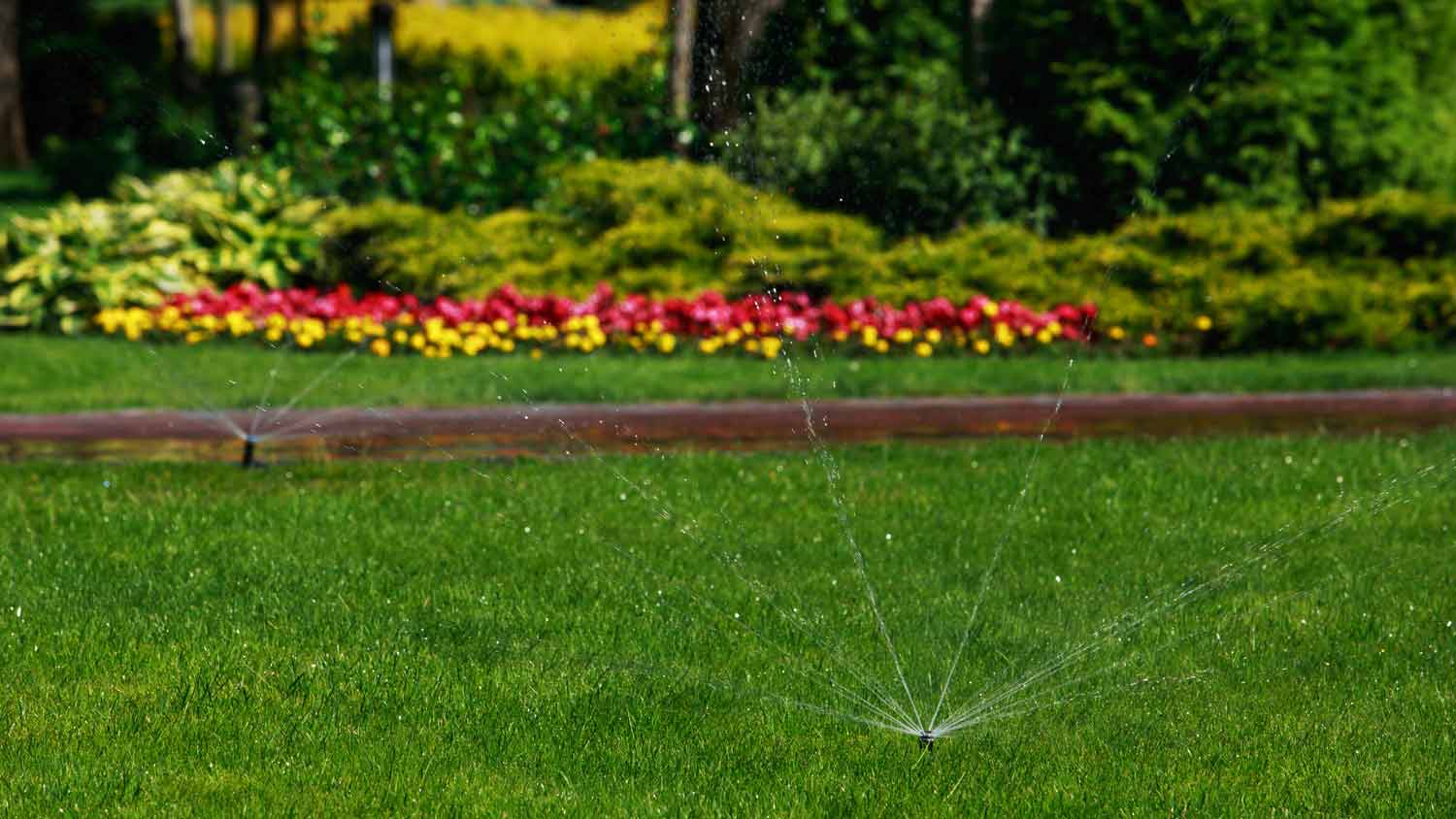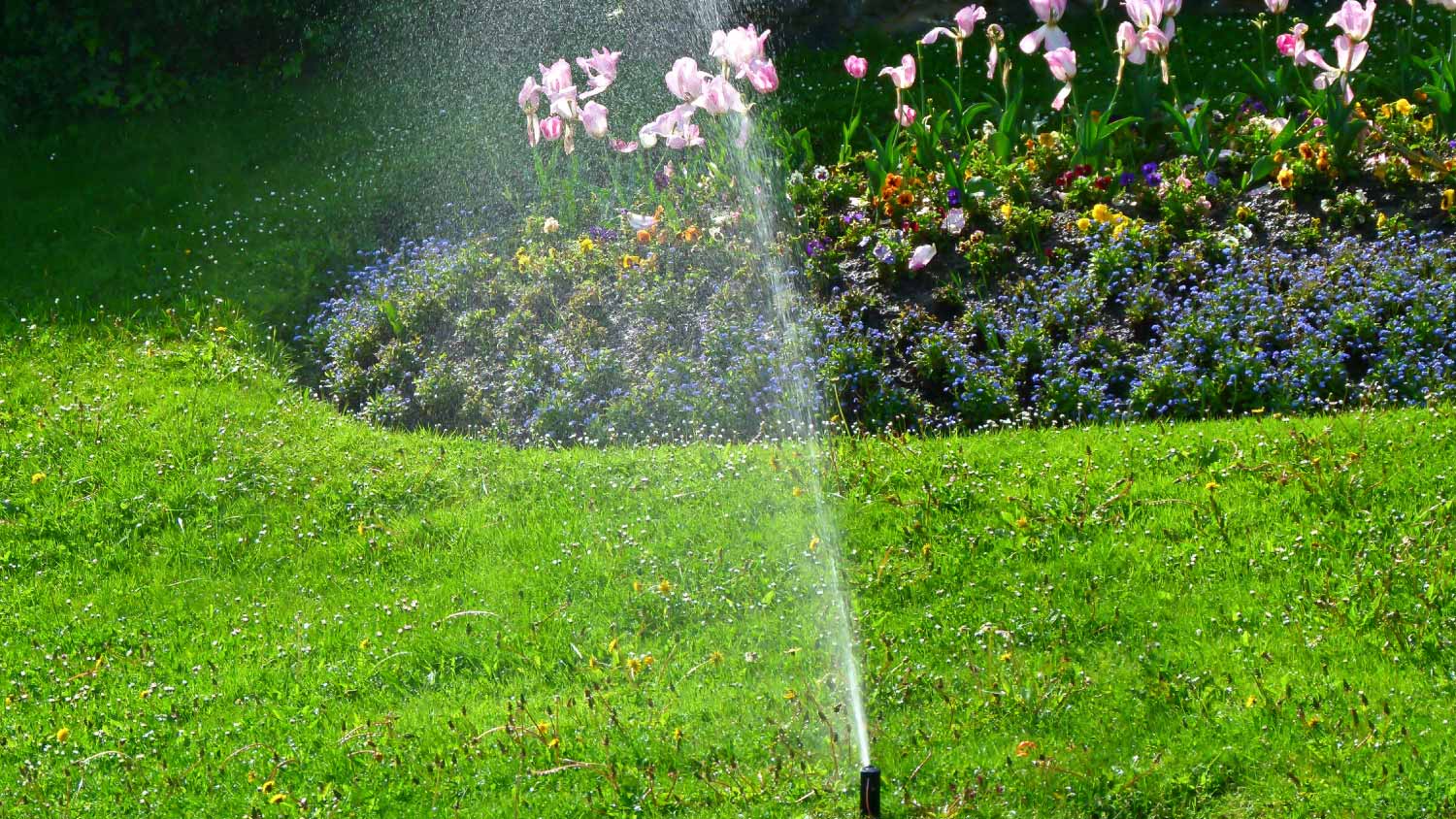How to Install a French Drain: 5 Steps to Success
Stop your yard from flooding with a simple drain you dig yourself


Does your yard turn into a swamp, lake, or river every time it rains? Learn how to install a French drain to fix the issue for good.
French drains consist of buried pipes and trenches that capture water and carry it away to a more convenient part of your property. Learn how to do a French drain DIY with this guide.
A french drain provides a sunken channel for water to disperse into the soil surrounding your home. Installing this type of system requires digging a trench and hooking up pipe connections, among other tasks, so it's best to hire a professional french drain installation company for this project.
How to Prep for Digging a French Drain
Your dog (and kids) might love running through a swampy yard, but most homeowners aren’t a fan. But before you can learn how to install a French drain, you’ll have some decisions to make.
1. Plan the Locations for Rerouting and Draining
Mark the center of the area on your property where flooding occurs. This will be the starting point of your drain system. From there, find an endpoint where you’d like excess water to drain, such as a road or a retention pond.
Mark the path between the two points with spray paint, flags, or stakes. Here are some key things to keep in mind when planning your drain location:
Elevation: Place your endpoint at a lower elevation than your starting point. For best results, slope down 6 feet for every 50 feet of pipe length.
Neighbors: Don’t direct pipes to drain toward your home or onto a neighboring property.
Permits: Obtain any French drink permits and know your neighborhood’s zoning restrictions.
Utilities: Call 811 to have your local utility company come mark underground utility lines.
Obstacles: Avoid having walls, fencing, posts, trees, or shrubs along your route.
2. Choose Your Piping
Different piping materials are better suited to different French drain installations. If your drainage route is curved or uneven, flexible corrugated piping is best. You can use PVC pipe for straight routes for a more durable and longer-lasting drain.
If using PVC, be sure to drill drainage holes every 6 inches along the length of the pipe for water to enter through.
You can also opt to purchase a gravel-free drainage pipe system, which consists of a corrugated pipe surrounded by polystyrene aggregate and pre-wrapped with filter fabric. This type of system should be installed according to the manufacturer’s instructions included with the product.
How to Install a French Drain
Bid your drainage problems adieu by learning how to install a french drain with this DIY project.
1. Dig Your Trench
Dig a trench along your marked path using a shovel or trenching hoe. For longer drains, consider renting a trencher machine for this step.
Your trench should be about 1½ foot deep and 1 foot wide. Your drain needs to slope down at least 1 inch for every 10 feet of pipe so gravity can work for you, so dig deep enough so that the pipe angles downward when it’s laying in the trench. You should also have your trench parallel to any buildings.
2. Line the Trench
Next, add a layer of about 3 inches of gravel or landscaping stone to the bottom of the trench you just created. Line the gravel bed along the entire trench with water-permeable landscaping fabric to keep out weeds, roots, dirt, and silt. Leave at least 10 inches of excess fabric on both sides of the trench to cover the piping later.
3. Lay and Connect Your Piping
Place an inlet grate at the top of the trench in the center of the area that floods the most. Attach your first round of piping to the grate, then continue attaching pipes together until you reach your draining point at the end of the trench. Carefully lay the whole connected pipe structure in the trench on top of your gravel layer with drainage holes in the pipe pointed downwards.
4. Test the Drain
With your pipes connected, pour water into the inlet grate and have a partner monitor the flow from the drain outlet. If you don’t see any water flow, you may need to regrade your trench with a steeper slope.
5. Cover the Trench
If your test works, temporarily cover the grate for protection while you fill in the trench. Fill the trench with enough additional gravel to completely cover the pipe, leaving approximately 5 inches of space between the top of the gravel and the surface of the ground. Wrap the excess fabric over the piping and gravel.
You can then cover the entire trench with topsoil, pat it flat, and reseed it. Alternatively, you can cover it with landscaping stone.
Taking Care of Your French Drain
Now that you know how to install a French drain, you will want to keep maintenance top of mind to ensure it continues working properly.
Regularly inspect and clean the inlet grate and outlet point to ensure they don’t get clogged with dirt, grass clippings, or other debris.
Use your garden hose to flush debris out of the pipes and keep water flowing freely.
If your French drain does clog or break, you may need to dig it up partially or completely to inspect the damaged area and make repairs. This tends to be easier when you fill your trenches with landscaping stone instead of covering them with topsoil and reseeding the grass.
DIY vs. Hire a Pro
Installing a French drain yourself is a labor-intensive project that involves a lot of time, energy, and labor-intensive effort. If you’re up to the challenge, don’t forget to consider the materials and tool expense of this DIY project.
| DIY French Drain Equipment | Average Cost |
|---|---|
| Renting a sod cutter for one day | $110 |
| Trencher rental for four hours | $60 |
| Wheelbarrow | $140 |
| 4-inch PVC pipe | $30 |
| Catch basin | $50 |
| Pea gravel | $0.50–$1.50 per square foot |
| Landscape fabric | $0.45–$0.90 per square foot |
Keep in mind that mistakes like choosing the wrong piping material or miscalculating the angle for the drain can lead to clogs and water backups that will require you to dig up your yard again.
Alternatively, you can hire a local French drain installation company and have the job done professionally. You may prefer this step if the soil in your yard is particularly rocky. This saves you the step of locating and marking your own utility lines, and helps you ensure the job is done right the first time.
How Much Does It Cost to Install a French Drain?
The cost to install a French drain is $5,000 on average, but can range from $1,000 to $18,000, depending on the type of drain you install, how long the drain is, and how much piping you’ll need.
Frequently Asked Questions
When installing a French drain, the holes in your pipe go down. This allows water to flow from the gravel below into the pipe to be carried away from your flood-prone area. If you’re using a corrugated pipe with slots on all sides, it doesn’t matter which direction the pipe is facing.
A French drain should be anywhere from 8 inches to 24 inches deep. The ideal French drain depth is about 1 1/2 feet deep, but you can vary the depth depending on the slope angle you need for your pipe. Consult a local French drain installer to determine the right depth for your installation project.
French drains may fail when they become clogged with soil granules that slip through the pores of the landscaping fabric and through the holes in the pipe.
Over time, this debris can build up inside the pipe and prevent water flow. To prevent this failure from happening, regularly flush out your French drain and keep debris away from the inlet grate.
















